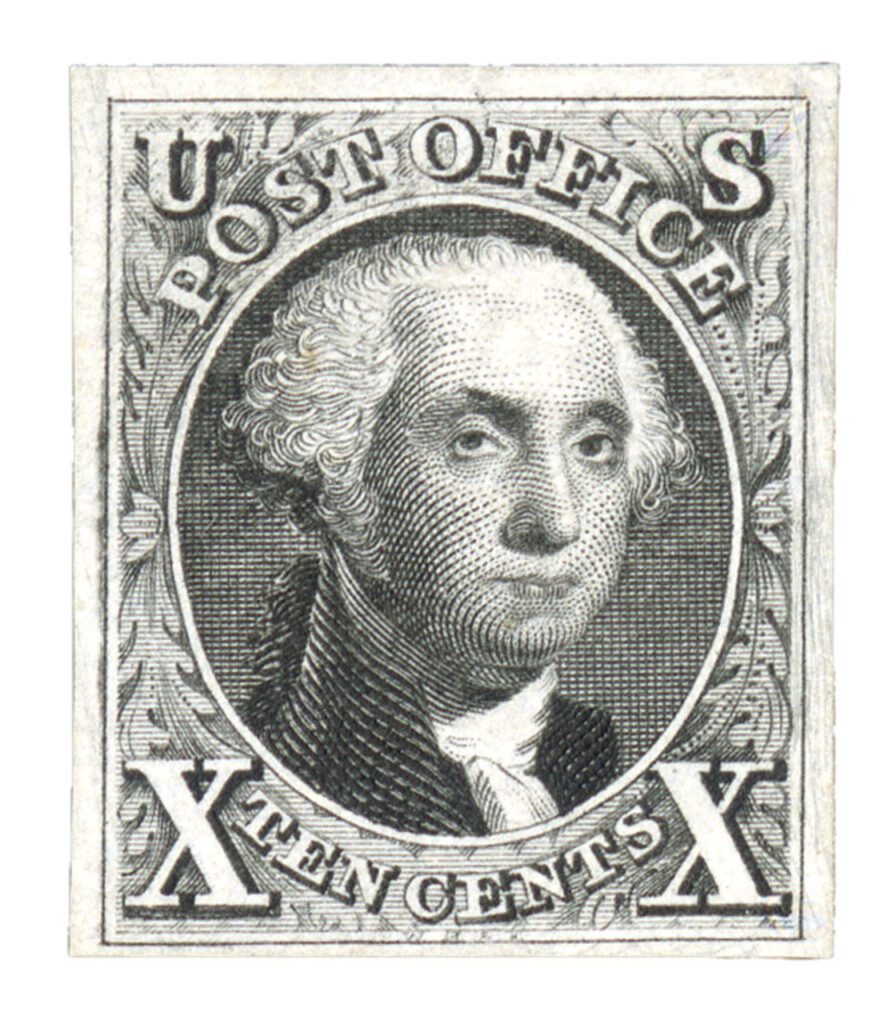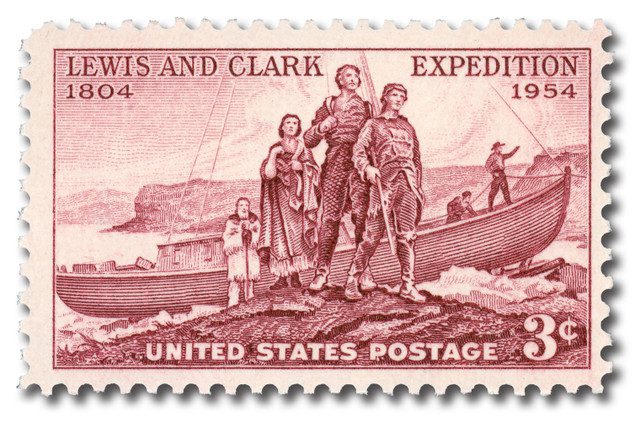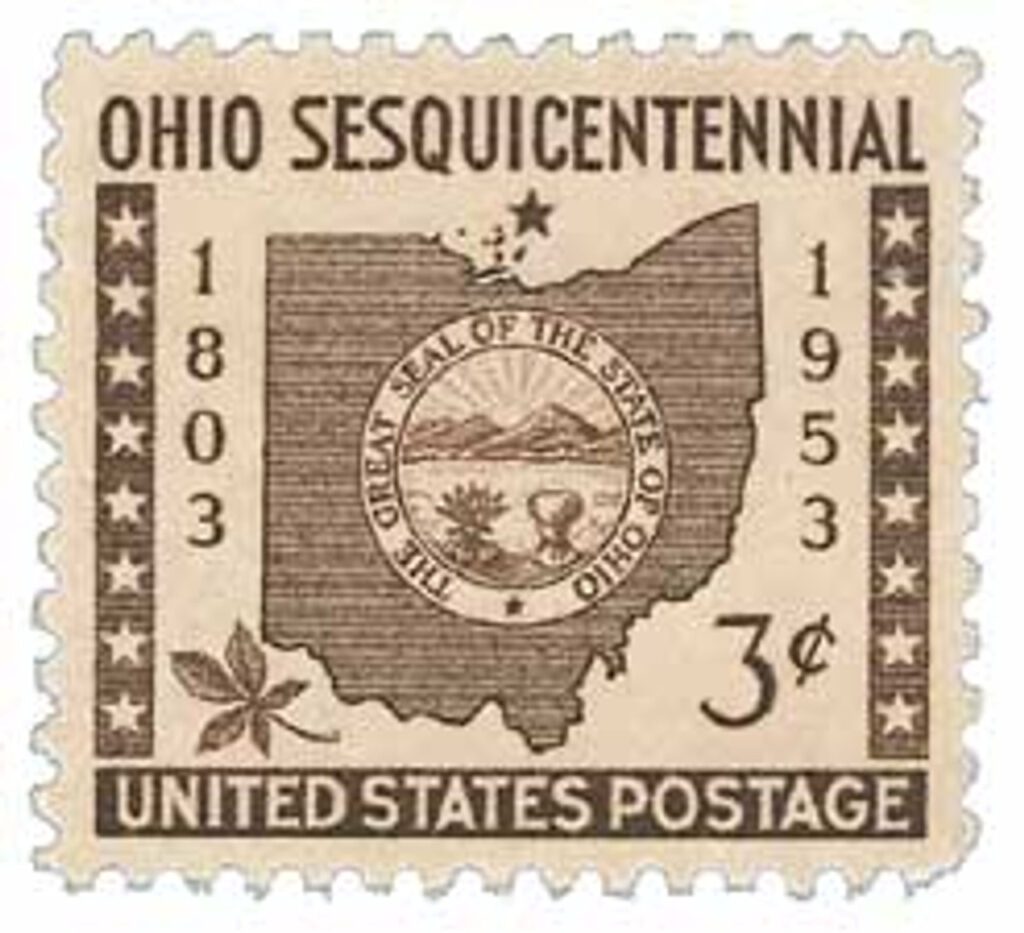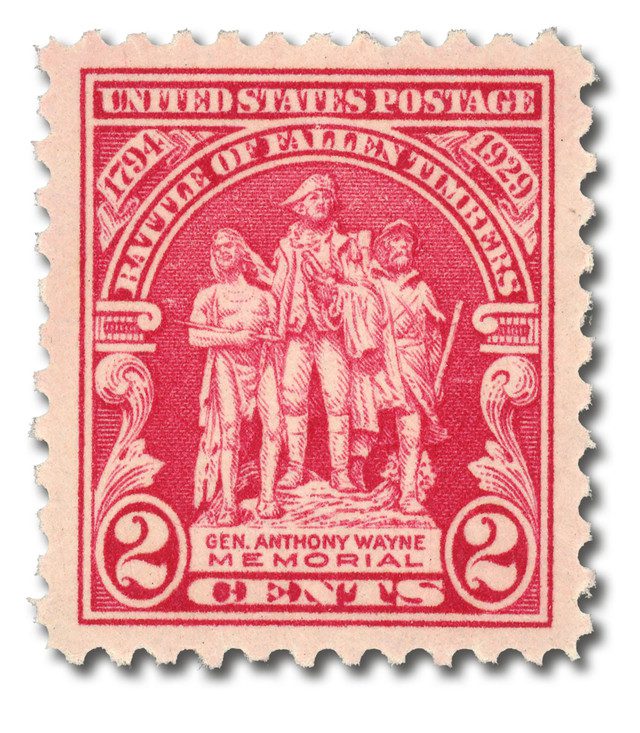On August 3, 1795, the United States and a group of Native American tribes (known as the Northwestern Confederacy) signed the Treaty of Greenville, establishing the boundary between American and Native American territory.
The United States gained title to the massive Northwest Territory from the British after the Revolutionary War. However, there were over 45,000 Native Americans living in the territory at that time. And the British maintained their forts while supplying and encouraging the Native Americans to prevent American settlement.
Since the Native Americans in the Northwest Territories were not included in the Treaty of Paris, they refused to recognize the United States’ claim to their territory. In 1785, members of several Native American tribes met in Fort Detroit and agreed to band together to fight the United States, rather than fighting on their own. This marked the start of the 10-year Northwest Indian War, also known as Little Turtle’s War. Little Turtle was the chief of a Miami tribe that historian Wiley Sword described as “perhaps the most capable Indian leader then in the Old Northwest.”

When they met the following year, they established the Ohio River as the boundary between their territory and that of America. The Northwestern Confederacy included the Wyandot (Huron), Shawnee, Ojibwe, Odawa, Potawatomi, Lenape (Delaware), Miami, Kickapoo, Kaskaskia, Wabash Confederacy, and Chickamauga Cherokee.
Attacks on American settlers began shortly after and the number of raids quickly increased. America sent its first troops over in the fall of 1786, led by General Benjamin Logan. However, their attack was on several Shawnee towns whose warriors were out raiding forts in Kentucky. The attack and deaths of noncombatants angered the Shawnee, who in turn retaliated with larger and more frequent attacks.
President George Washington sent military expeditions against the Native Americans in 1790 and 1791, but they met with defeat. Then, in 1792, Washington appointed Anthony Wayne head of the US Army. This brilliant tactician had earned the name “Mad Anthony” Wayne through his acts of reckless courage during the Revolutionary War.
On August 20, 1794, Wayne’s forces defeated a large army of Native Americans at the Battle of Fallen Timbers, near present-day Toledo, Ohio. (Click here to view the original statue that US #680 was based on.) That defeat was a major blow to the Native Americans. Additionally, the British and Americans signed the Jay Treaty a few months later. In that treaty, the British agreed to evacuate their forts, meaning they could no longer provide assistance to the Native Americans. With this realization, the Native American leaders agreed to meet with the Americans to discuss a treaty.
On August 3, 1795, both parties met at Fort Greenville (present-day Greenville, Ohio) to establish a treaty of peace. Wayne represented America and Little Turtle the Northwestern Confederacy. In addition to ceasing hostilities, the representatives agreed on a new border between the US and Native American land, which became known as the Greenville Treaty Line. The United States also gave the Native Americans $20,000 in goods (blankets, utensils, and animals).
Other Americans present for the signing of the treaty included William Wells (who would go on to serve in the War of 1812), future president William Henry Harrison, and explorers William Clark and Meriwether Lewis.

In spite of the terms of the treaty, American settlers largely ignored the boundary and continued to take Native American land, leading to further conflicts in the coming years.
Click here to read the full text of the treaty and click here to view a map of the borders it established.
| FREE printable This Day in History album pages Download a PDF of today’s article. Get a binder or other supplies to create your This Day in History album. |
Discover what else happened on This Day in History.




The native Americans were more capable of understanding & bargaining than I ever understood from previous history lessons. Thank you for this informative brief.
This treaty was just one of many worthless pieces of paper. The treaty ignored/broken by white settlers and the troops were sent in to defend the trespassers.
Thank you for putting History back into stamps for younger people to learn about it. Maybe some
day they will put buying savings stamps at schools. I will always remember buying the most stamps
and bonds during those times and it was a good way of saving your allowance. I was so proud to just
buy stamps and then a bond when the book was full. Should still keep it up in schools = at least the
grade school. Would help to get them through college, at least a start.
The U.S. has broken, violated, or unilaterally altered the vast majority of the 370+ treaties it made with Native American tribes. These treaties were legally binding under the U.S. Constitution, but the federal government routinely ignored or overturned them to serve expansionist, economic, or political goals.